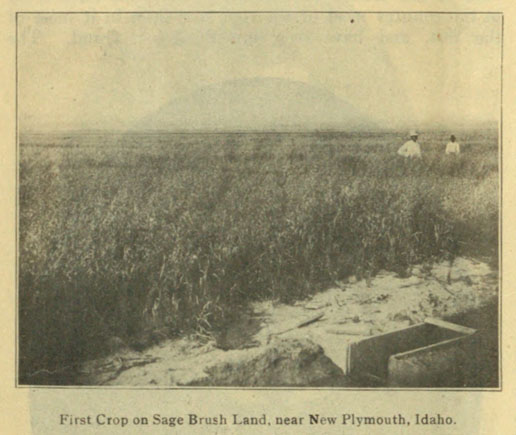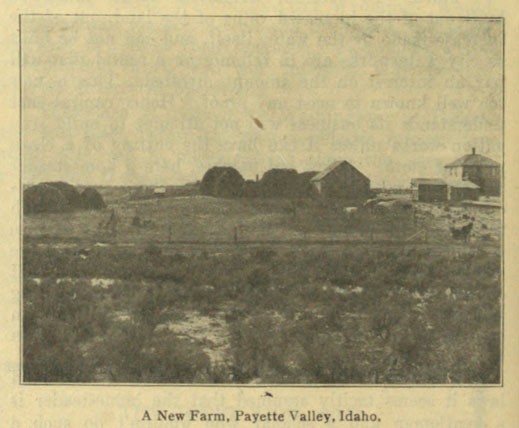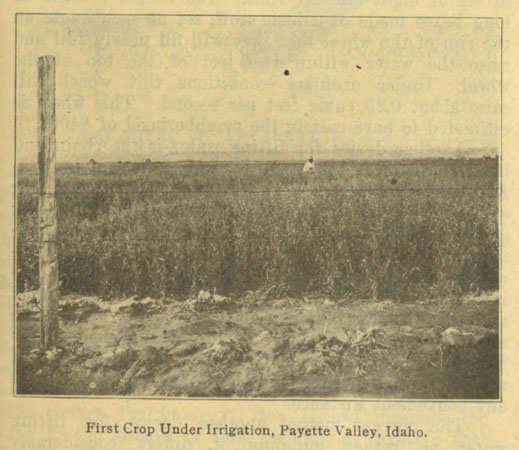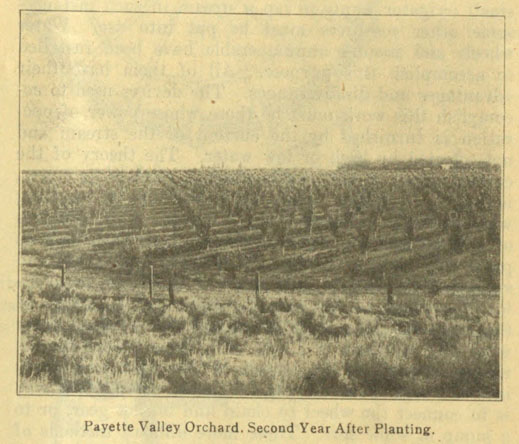EDITORIAL
New Plymouth Colony
Irrigation Age
Volume 20, Number 03, January 1905, Page 69
We are presenting in this issue four half-tones illustrative of the development along irrigation lines under the system of the New Plymouth Land and Colonization Company, Limited, Payette, Idaho. This company has done good work in lifting barren lands into a state of fine cultivation and much of the good work accomplished by this company is due to the active member of the concern, Mr. C. E. Brainard.
Page 74


Page 75


BROUGHT BY THE POSTMAN
Letters from Correspondents to The Irrigation Age
Volume 20, Number 04, February 1905, Page 117
Payette, Idaho. Jan. 20, 1905Irrigation Age
Editor Irrigation Age, Chicago, Illinois
Thousands of people will lake advantage of the cheap rates this year on account of the Exposition at Portland.
Most of these people will be anxious to see something more of the little State that has been awarded first prize for the agricultural exhibit at the St. Louis Exposition than can be observed in the fleeting glimpses of sequestered valleys while crossing the streams which traverse the sage brush plains in their descent from the snow-capped mountains in the distance to the great Snake River which spans the State from east to west.
Until a few years ago Idaho was considered only a mountainous grazing country, but when the mountains were found to be rich in gold and silver and other precious metals and the sage brush desert was transformed by irrigation into orchards which rivaled those of the older States, home-seekers become home-builders and their efforts have certainly been richly rewarded. Three times in succession Idaho received first prize for her apples at the World's Fairs and for display of the greatest variety and most perfect fruit she won the first prize at the Irrigation Congress in 1903, the most complete exhibit coming from the celebrated Payette Valley. This valley contains less than 100,000 acres of land which can be irrigated from present canals and while there are some larger irrigated districts in the State, none are more fertile or attractive to the educated and thrifty farmer or fruit -grower who is seeking a mild climate where crops are prolific and sure, water abundant and the modern conveniences of the telephone and rural free delivery easily accessible. People who are fleeing from the cramped conditions that exist in the Eastern Stales desire first of all to cast their lot among a good class of people.
The Payette Valley is settled with an educated, thrifty class, mostly from the middle Western States and the results of their labors during the past three years in developing this land from its natural state into homes most beautiful is certainly marvelous.
Numberless thousands of streams of clear pure water wending their way perpetually through orchards laden with fruits and fields of golden grain and blooming alfalfa presents a most enchanting scene and takes from life the monotony usually attending the efforts of the farmers in the East.
This valley offers superior school, church and social advantages to many of the older States, also health, home and happiness with all the necessary comforts of life.
PAYETTE
Visit archive.org to view Irrigation Age, Volume 20
